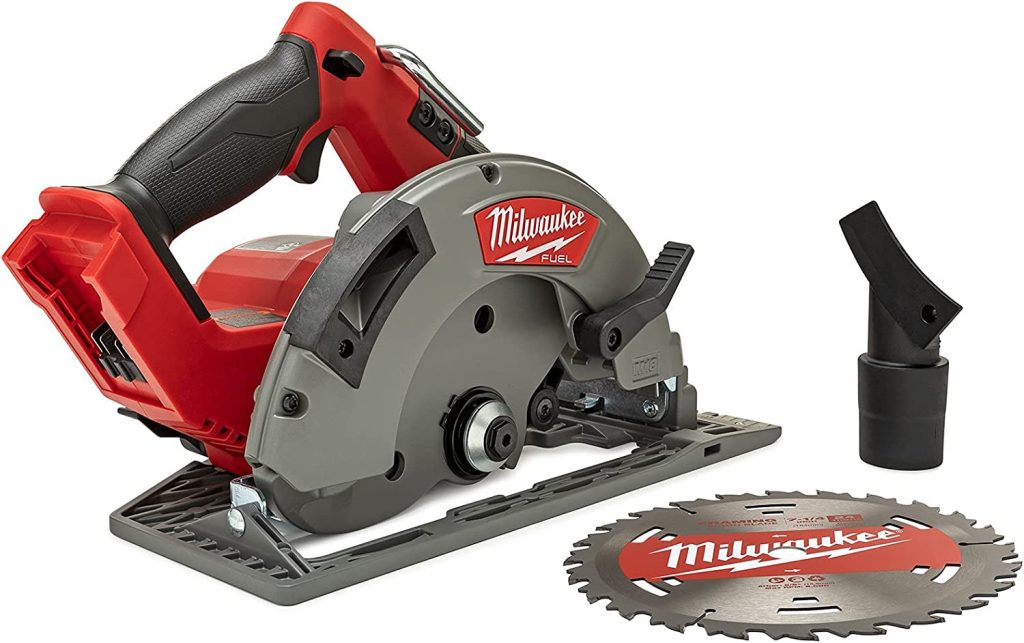How to replace circular saw blade? Want to know the answer? Circular saws are an essential tool for any DIY enthusiast or professional contractor, but as with any tool, the blade will eventually wear out and need to be replaced.
Changing a circular saw blade may seem like a daunting task, but with the right guidance, it can be a simple and straightforward process.
In this blog post, we will guide you through step-by-step instructions on how to replace your circular saw blade, providing you with the necessary knowledge and tools to complete the task with ease.
It is important to note that replacing a circular saw blade requires the correct tools, technique, and safety procedures to ensure a successful and safe outcome.
Whether you are a seasoned pro or a novice, the process of replacing a blade can be intimidating without proper guidance.
In this blog post, we will walk you through the necessary steps of safely removing the old blade, selecting the right replacement blade, and installing the new blade.
By following our comprehensive guide, you will be able to replace your circular saw blade :
Before starting, make sure the circular saw is unplugged or the battery is removed to prevent accidental activation.
Materials You’ll Need:
- New circular saw blade
- Wrench (usually provided with the saw)
- Safety goggles
- Work gloves
Steps
Prepare the Work Area:
Ensure you have a clean, well-lit workspace. Lay down a cloth or a piece of cardboard to protect the surface and keep the saw stable.
Choose the Right Blade:
Make sure you have the correct replacement blade for your circular saw. Check the diameter, arbor size, and tooth configuration. The information is usually printed on the old blade or mentioned in the saw’s manual.
Safety First:
Put on your safety goggles and work gloves before proceeding.
Unplug the Saw:
If the circular saw is corded, unplug it from the power source. If it’s cordless, remove the battery.
Retract the Blade Guard:
Most circular saws have a retractable blade guard that covers the blade. Use your hand to pull back the guard, exposing the blade.
Lock the Blade:
To prevent the blade from spinning while you’re loosening the bolt, use the provided wrench to engage the blade lock. This might involve depressing a button or engaging a lever near the blade.
Loosen the Arbor Bolt:
Use the wrench to loosen the arbor bolt (also known as the center nut) that holds the blade in place. Turn the bolt counterclockwise to loosen it. Remember that it might be tight, so apply steady pressure and make sure the wrench is properly seated on the bolt.
Remove the Old Blade:
Once the arbor bolt is loose, carefully remove the old blade by sliding it off the arbor (the shaft that holds the blade).
Clean the Arbor Area:
While the blade is off, take the opportunity to clean any debris or dust around the arbor area. This will ensure the new blade sits properly.
Install the New Blade:
Slide the new blade onto the arbor, making sure the blade’s teeth are facing in the correct direction. Usually, the teeth should be pointing in the direction of the saw’s rotation.
Tighten the Arbor Bolt:
Use the wrench to tighten the arbor bolt by turning it clockwise. Make sure it’s snug, but be cautious not to over-tighten, as this can damage the blade or the saw.
Release the Blade Lock:
Disengage the blade lock that you engaged earlier to hold the blade in place.
Close the Blade Guard:
Carefully release the blade guard, ensuring it smoothly covers the blade again.
Test Before Use:
Plug the saw back in (or insert the battery for cordless saws), and without any material to cut, test the saw to ensure the blade is properly installed and spins without wobbling or making unusual noises.

Prepare the saw for replacement :
Before replacing a circular saw blade, it’s important to prepare the saw to ensure a safe and successful blade swap. To begin, turn off the saw and unplug it from the power source. Next, loosen and remove the blade guard and the bolt or nut that holds the blade in place.
It’s important to note that the direction of the bolt or nut may vary depending on the model of saw, so consult the user manual if necessary.
Once the bolt or nut has been removed, carefully remove the old blade and inspect it for any damage or wear. With the saw now prepared, you can move on to the next step of replacing the blade.
Remove the old blade carefully
When it comes to replacing a circular saw blade, it is essential to follow the necessary steps to ensure a safe and successful replacement.
The second step in this process is to remove the old blade carefully. First, ensure that the saw is unplugged to avoid any accidents.
Next, locate the blade bolt and loosen it with a wrench. Carefully remove the blade bolt and outer washer, taking care not to misplace them.
Gently remove the old blade, being mindful of any sharp edges. It is essential to handle the old blade with caution to avoid any accidental injuries. Once the old blade has been removed, it is time to proceed with installing the new blade.
Select the appropriate replacement blade
Replacing a circular saw blade is a simple process that requires a few key steps to be followed. One of the most important steps is selecting the appropriate replacement blade.
Before purchasing a new blade, confirm the size and type of blade required for the saw. This information can be found in the owner’s manual or on the blade itself. It is also important to consider the type of material being cut and the desired finish.
For example, a rip blade is designed for rough cuts, while a crosscut blade is meant for smoother, more precise cuts. Selecting the appropriate replacement blade will ensure safe and efficient operation of the saw, as well as produce the desired results for the specific project at hand.
Install the new blade correctly
Replacing a circular saw blade is a task that requires precision and attention to detail. After removing the old blade, the next step is to install the new blade correctly.
Before starting the installation process, verify that the new blade is the correct size and type for your saw. To correctly install the new blade, begin by positioning the blade correctly onto the saw’s arbor.
Line up the arbor hole in the center of the blade with the arbor of the saw. Make sure the blade teeth are facing in the right direction, and that the blade is tight against the saw’s arbor flange. Use the wrench provided to tighten the arbor nut securely.
Verify that the blade is not wobbling and that it is aligned with the saw’s fence to ensure a straight cut. Remember to always refer to the manufacturer’s instructions for specific guidance and proper safety precautions.
Test the saw for proper operation
Once you have installed the new circular saw blade, it is crucial to test the saw for proper operation. Start by disconnecting the saw from the power source to avoid any accidents.
Then, carefully inspect the blade to ensure that it is tightly secured and aligned correctly. Next, turn on the saw and listen for any abnormal sounds or vibrations.
Observe the blade’s movement to ensure that it is rotating smoothly without any wobbling or shaking.
If you notice any issues or irregularities, immediately turn off the saw and double-check the blade installation.
Always keep safety in mind and wear appropriate personal protective equipment when operating a circular saw.
Final Conclusion
In conclusion, replacing a circular saw blade is a straightforward process that any woodworker can perform. As we have discussed, you need to have the appropriate tools, including a new saw blade, screwdriver, and wrench, and follow the simple steps outlined above.
Remember to prioritize safety throughout the process by disconnecting the saw from the power source and wearing protective gear.
With these tips, you can quickly and efficiently replace your circular saw blade and get back to your woodworking projects with a newly functioning tool.



